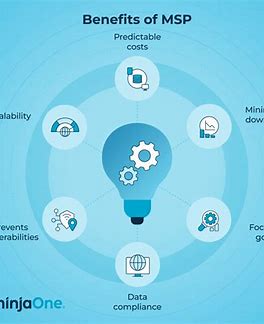Tech Debt: What It Is and How MSPs Help You Eliminate It

In the fast-paced world of technology, speed often takes precedence over sustainability. Businesses are under constant pressure to deliver results quickly—new systems, new software, faster onboarding, and leaner operations. But just like cutting corners on a construction project, those quick fixes come at a cost. In the tech world, that cost is known as technical debt.
What Is Technical Debt?
Technical debt (or “tech debt”) is the result of choosing an easy or quick solution now instead of a better, more sustainable one that would take more time or resources. It’s often a trade-off between short-term gains and long-term stability.
For example, a company might:
- Choose outdated hardware to save money upfront.
- Patch together a legacy system instead of upgrading it.
- Skip documentation and training in the rush to deploy new tools.
- Hire a less experienced developer or consultant to save costs.
While these decisions may seem harmless at first, they often accumulate. Over time, they create friction, instability, and rising maintenance costs. Systems start to break down, integrations fail, and teams spend more time fixing issues than moving forward.
The Real Cost of Technical Debt
Much like financial debt, tech debt compounds. At first, it might just be a slow server or an occasional compatibility issue. But over time, it can:
- Increase downtime and reduce productivity.
- Lead to higher support and repair costs.
- Limit scalability as your business grows.
- Introduce security vulnerabilities.
- Make onboarding or training harder as systems become more convoluted.
Worst of all, it can delay or derail digital transformation initiatives just when you need them most.
Why Do Businesses Accumulate Tech Debt?
Tech debt isn’t always the result of bad decisions. Sometimes it’s a necessary compromise—especially for small and mid-sized businesses with limited resources. But often, it stems from:
- Lack of long-term IT planning.
- No formal update or refresh cycles.
- Misaligned priorities between leadership and IT.
- Underinvestment in IT strategy or infrastructure.
And once it’s there, it becomes difficult to untangle without impacting operations.
How MSPs Help Reduce and Eliminate Tech Debt
Managed Service Providers (MSPs) work with businesses to provide ongoing IT support and strategy. While many people think of MSPs as “tech fixers,” a good MSP does more than just put out fires—they help you build sustainable systems that don’t catch fire in the first place.
Here’s how MSPs help manage or eliminate tech debt:
- Strategic Planning
MSPs don’t just look at your current problems—they help plan for your future. This includes lifecycle planning for hardware, software, and infrastructure, so you’re never stuck with unsupported or obsolete systems.
2. Cost-Effective Upgrades
While better technology sometimes means higher upfront costs, MSPs help you prioritize upgrades that deliver the most value. Instead of reactive purchases, you’re investing wisely with a clear roadmap.
